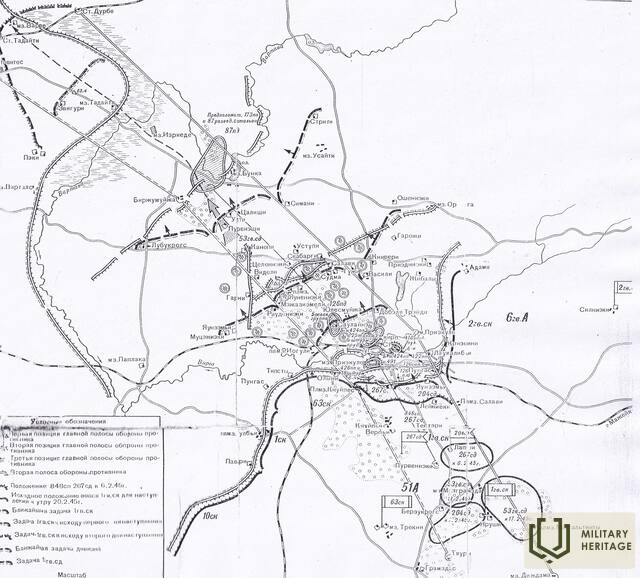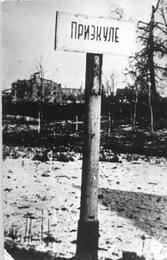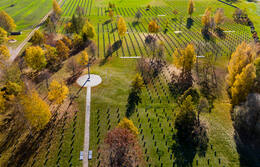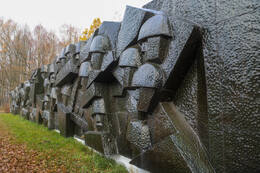Priekule operation II WW2
On 20 February 1945, the Red Army launched an attack in the direction of Liepaja in a 30 km wide section on both sides of Priekule during the Fifth Great Battle of Courland (12 February-14 March 1945).
In fierce fighting that lasted until 1 March, the Red Army managed to push back the German lines 1-2 km and take Priekule. On 5 March, an offensive to the SE of Saldus began, involving 8 Red Army infantry divisions and 2 tank units. Here the Red Army managed to make a deeper incursion into the German positions east of Saldus and in places reach the Saldus-Liepaja highway.
On 14 March, the Soviet offensive eased. The Red Army lost 70,000 soldiers killed and wounded, 608 tanks and 178 aircraft, but gained a small swathe of terrain, including Djukste and Priekuli
Related objects
Saldus German Soldiers' Cemetery
Saldus German soldier's cemetery is located on the Saldus-Ezere highway. Around 25,000 German soldiers, as well as some Latvian legionnaires, were reburied in the 8-hectare cemetery. Reburial has been taking place since 1997.
From May 1 to October 1, an exposition on the Battle of Kurzeme can be seen in the memorial room. During this period, the memorial room is open on weekdays from 9:00 a.m. to 5:00 p.m., on Saturdays and Sundays the cemetery also has a tour guide. The registers of soldiers buried in Saldus German soldiers' graves and fallen soldiers throughout Latvia are also available.
Priekule Memorial Ensemble of Warrior’s Cemetery
The Priekule Memorial Ensemble of Warrior’s Cemetery is on the Liepāja-Priekule-Skoda road and is the largest burial site of Soviet soldiers of World War II in the Baltics. More than 23,000 Soviet soldiers are buried here. Operation Priekule was one of the fiercest battles in Kurzeme Fortress that took place from October 1944 to 21 February 1945. The Battle of Priekule in February 1945 lasted seven days and nights without interruption and had a lot of casualties on both sides. Until Priekule Warrior’s Cemetery was transformed into a memorial, the last monument of the outstanding Latvian sculptor K. Zāle (1888-1942) was located here to commemorate the independence battles in Aloja. Between 1974 and 1984, the 8 ha Priekule Warrior’s Cemetery was transformed into a memorial ensemble dedicated to those who fell in World War II. It was designed by the sculptor P. Zaļkalne, architects A. Zoldners and E. Salguss, and the dendrologist A. Lasis.
The centre of the memorial holds a 12 m tall statue called the ‘Motherland’, and names of the fallen are engraved on granite slabs. Until Latvia regained its independence, the Victory Day was widely celebrated every year on May 9.
Related stories
"The war is not over until the last soldier is buried" (Priekule Brethren Cemetery)
Kurzeme was established as a separate and isolated battlefield on October 10, 1944. About 500,000 soldiers of the German armed forces were counted as surrounded. According to the reports of the headquarters of the 1st Baltic Front, only a "slight effort" was needed to completely liberate the entire Baltic coast. However, the fighting in Kurzeme continued for another seven months and Kurzeme became a symbol of the end of World War II.
During the seven months of fighting until May 1945, the German armed forces lost 154,108 dead, wounded and missing soldiers in Kurzeme, while the Red Army lost around 400,000 dead, wounded or missing Red Army soldiers.








